- Administrator
- Albums and Singles
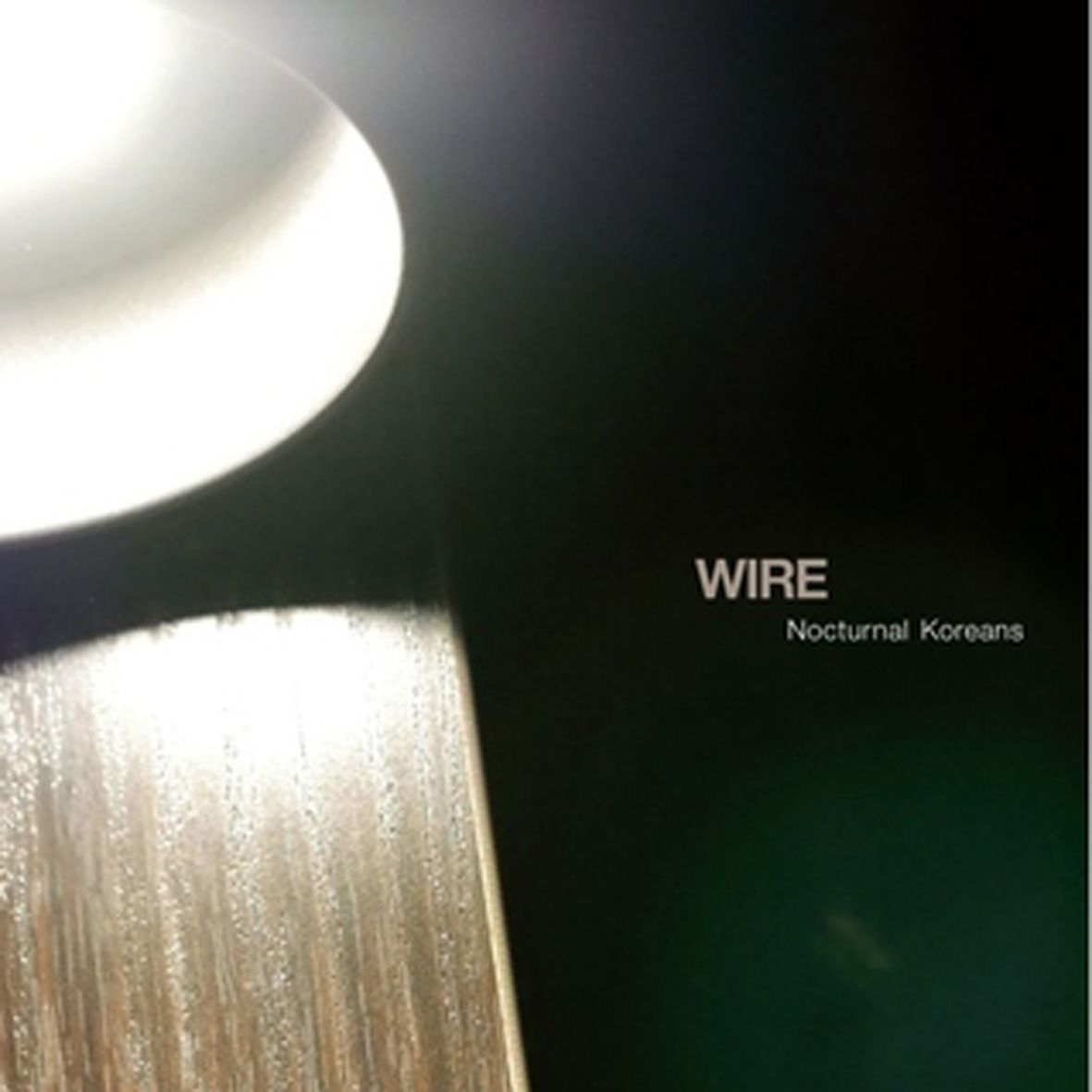 Wire’s latest mini-album is a somewhat darker, subtly more experimental, and arguably superior sister to their self-titled 2015 release.  In fact, these songs were all written during the very same period, but they were split off into their own release because they ostensibly shared a path directly opposed to the aesthetic of Wire: the self-titled album was a deliberately no-frills document of what the band actually sounds like when they play together in a room, while Koreans documents what they can achieve with studio enhancements and liberal editing.  Despite those very different approaches, the two albums do not actually seem all that different to my ears.  I guess I was hoping for a bit more of a radical departure than this.  While there are a few intriguing exceptions, Koreans mostly just sounds like more of the same hook-heavy and slightly off-kilter songcraft that I always expect from Wire.  That is certainly not a bad thing, but Nocturnal Koreans is definitely more solid than revelatory.
Wire’s latest mini-album is a somewhat darker, subtly more experimental, and arguably superior sister to their self-titled 2015 release.  In fact, these songs were all written during the very same period, but they were split off into their own release because they ostensibly shared a path directly opposed to the aesthetic of Wire: the self-titled album was a deliberately no-frills document of what the band actually sounds like when they play together in a room, while Koreans documents what they can achieve with studio enhancements and liberal editing.  Despite those very different approaches, the two albums do not actually seem all that different to my ears.  I guess I was hoping for a bit more of a radical departure than this.  While there are a few intriguing exceptions, Koreans mostly just sounds like more of the same hook-heavy and slightly off-kilter songcraft that I always expect from Wire.  That is certainly not a bad thing, but Nocturnal Koreans is definitely more solid than revelatory.
I have to admit that I was quite surprised by the amount of mainstream attention that this album has garnered.  I understand that Wire are no longer the prickly, contrarian, and boundary-pushing band of their youth and that there is quite a wave of nostalgia these days for the leading lights of the post-punk milieu.  However, Nocturnal Koreans is still a self-released album and Wire are not elder statesmen doing a valedictory lap to bask in their past glories.  Anyone hoping for another Pink Flag or 154 is definitely not going to find it here, as Wire are adults who have aged (fairly) gracefully and are now making very adult music.  They still have a healthy amount of angst, but it is very much of the understated variety.  On a fundamental level, I find it remarkable that a batch of well-crafted, cerebral, and sophisticated rock songs can make a blip in the current cultural landscape.  Even shorn of menace and eccentricity, Wire are not an easy sell, as these eight songs are coolly detached, distinctly unflashy, and peppered with inscrutable, cryptic, and obtuse lyrics like "I sent a message to your mobile home, I'm counting rings in a fish's bones."  As always, a decent amount of the band's wordplay is insightful or amusing, but what Nocturnal Koreans mostly offers is just a lot of catchy, polished, and mid-paced rock that is not dissimilar to 1979’s "Outdoor Miner."
All of it is quite easy on the ears, of course, but the best songs are definitely the ones that allow some bite, ominousness, or eccentricity to color Colin Newman's otherwise pristine and cool songcraft.  For example, the album's centerpiece ("Forward Position") completely eschews drums in favor of a languorously lush and brooding reverie and some of the album’s most unsettling and evocative lyrics ("I am black box, I remember").  The buoyant and rolling "Internal Exile" is another strong piece, embellishing its descending arpeggio groove with uncharacteristic touches like trumpets and a lap steel.  Unsurprisingly, the one piece that features Graham Lewis’s vocals ("Fishes Bones") is also quite memorable, unleashing a charming stream of non-sequiturs and plenty of vocal effects over a heavy groove.  A few more songs in a similar vein would have been quite welcome, as Lewis's infusion of character, cracked artiness, and gleeful absurdity is a wonderful counterbalance to Newman's perfectionism.  I can understand why the album took the shape it did, as the Newman-sung songs are considerably sharper and more fully formed, but some more anarchic experimentation, fun, and rough edges would have provided the contrast necessary to make the more chiseled songs stand out.  Of course, I am some writing for an experimental music website rather than, say, Rolling Stone, so catering to my taste may very well be commercial suicide.  Lack of objectivity aside, however, it is hard to truly love an album where so much character and idiosyncrasy has been sanded away.  Truly liking it, on the other hand, is quite easy.
Minor grievances aside, Nocturnal Koreans is unquestionably a strong and consistent album (albeit quite a brief one).  My sole significant frustration is that the laser-focus on production and taut, propulsive, and (fairly) conventional rock structures mutes the band’s personality to a less-than-ideal degree.  Consequently, this is a very smart, likable, and catchy release that only occasionally catches fire or hints at greatness.  The flipside of that, of course, is that it never ever falls flat, lags, or seems half-baked.  If the Wire of 2016 excels at one thing, it is definitely the mechanics of songcraft.  While professionalism is admittedly not high on the list of traits that I excitedly hope for when I put on an album, I definitely appreciate it when a band knows when to end their songs, knows how to keep their momentum going, and makes damn sure that every single song has a strong enough hook to be memorable.  At its worst, Nocturnal Koreans consistently achieves all of those things.  At its best, it contributes one more entry ("Forward Position") into the canon of great Wire songs.
 
Read More
- Administrator
- Albums and Singles
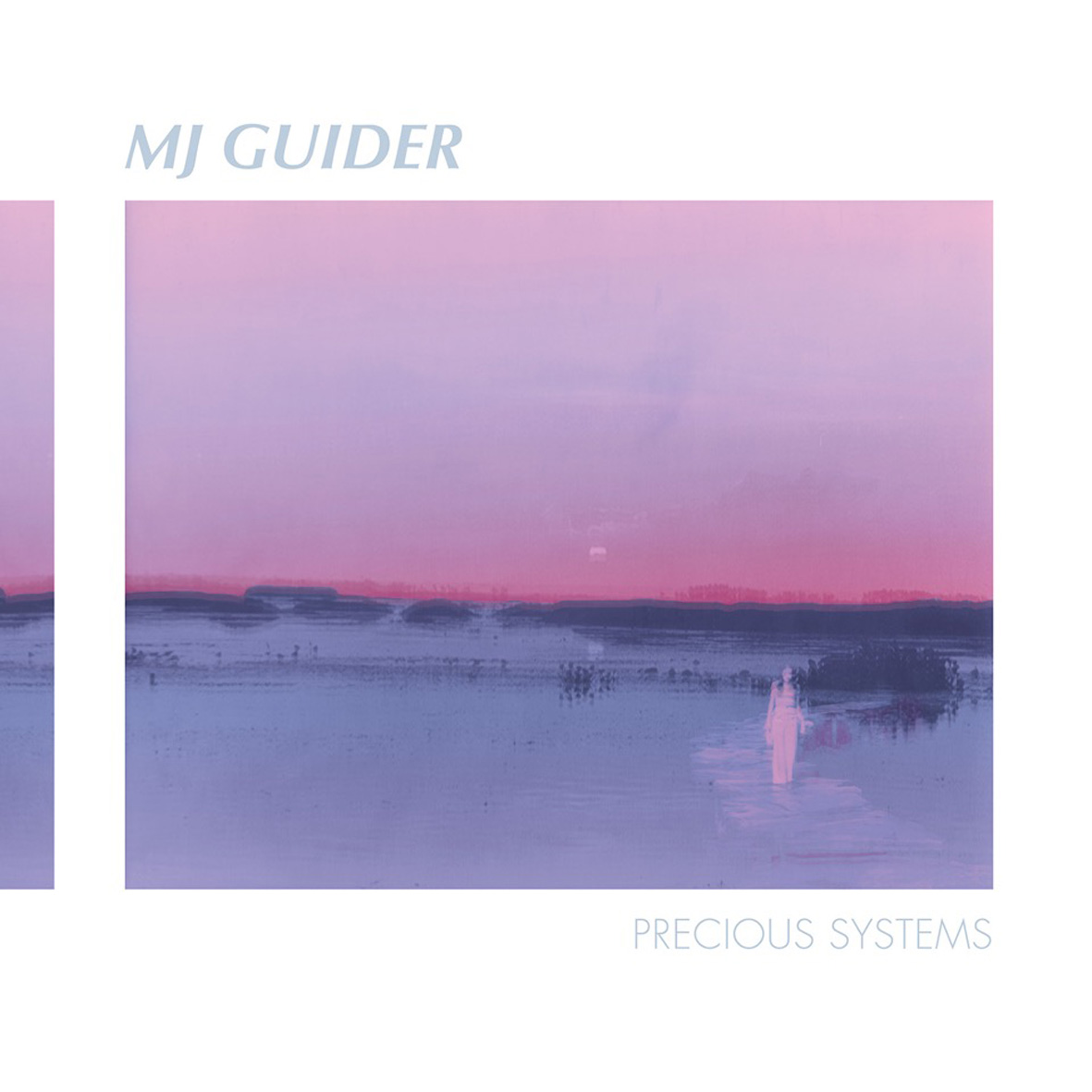 After a bit of a long slumber, Kranky has resurfaced with the first full-length from New Orleans’ Melissa Guion.  Guion’s previous discography is a bit lean, as she has previously only released one cassette back in 2014, but she seems to have quite a fully formed aesthetic that will no doubt delight fans of the Kranky milieu.  In fact, it is quite hard to discuss Precious Systems without making favorable comparisons to Grouper, as Guion is quite a similarly enthusiastic proponent of hazy, reverb-swathed vocals.  Musically, however, MJ Guider is far more indebted to shoegaze and gauzy 4AD-style Romanticism, crafting propulsive and hook-filled songs that feel artfully hollowed-out and slowed to a narcotic crawl.
After a bit of a long slumber, Kranky has resurfaced with the first full-length from New Orleans’ Melissa Guion.  Guion’s previous discography is a bit lean, as she has previously only released one cassette back in 2014, but she seems to have quite a fully formed aesthetic that will no doubt delight fans of the Kranky milieu.  In fact, it is quite hard to discuss Precious Systems without making favorable comparisons to Grouper, as Guion is quite a similarly enthusiastic proponent of hazy, reverb-swathed vocals.  Musically, however, MJ Guider is far more indebted to shoegaze and gauzy 4AD-style Romanticism, crafting propulsive and hook-filled songs that feel artfully hollowed-out and slowed to a narcotic crawl.
For better or worse, the opening "Lit Negative" captures Guion at her absolute zenith, disrupting her languorous dreampop with a wonderfully massive two-note guitar hook.  She also embellishes her stark and hazy aesthetic with a groove that can sound almost sensuous at times, albeit still in her characteristically bloodless way.  "Bloodless" is definitely one of the best ways to summarize the MJ Guider vision, as nearly every choice that Guion makes seems intended to fuel an atmosphere of spectral detachment.  Correspondingly, her set-up is admirably stark and DIY, as these nine pieces were recorded with little more than a guitar, a drum machine, and a Roland tape echo box.  Naturally, such a palette lends itself quite readily to slow-motion bleariness and a few songs regrettably err into plodding goth-lite mopery.  For the most part, however, Guion shows a real knack for both hooks and atmosphere.  Precious Systems' strongest moments tend to always be those where Guion transcends her murky reverie rather than throws herself wholeheartedly into it.  When it comes right down to it, I want to hear an album by a human and not an album by an echo box, so I definitely prefer the moments where something forcefully emerges from the homogenizing and hallucinatory fog.
In some cases, that "something" can be as simple as a strong pulse, as the 10-minute "Evencycle" is little more than a disco thump and lush "locked groove" loop of Guion’s hushed voice and some understated guitar shimmer.  It never quite evolves into anything more, but the various components feel like they are gradually falling out of phase with one another due to subtle shifts in the beat.  It’s a neat trick, if an unambitious one.  The much shorter "Second Surface," on the other hand, eschews a beat entirely.  Nevertheless, it easily stands among MJ Guider's best work due to its gorgeously warm chord progression, heavenly vocals, and wonderfully hissing and soft-focus textures.  Some of the lesser highlights occur when Guion instead attempts to sound like a New Order that has been sucked dry by a vampire, as she does on the driving "Triple Black," adhering to a tight pop structure and unleashing an wonderfully echoey guitar hook.  The closing "Fiction Control" delves into similar territory with slightly less success, occasionally becoming over-cluttered, but eventually catching fire once the beat is stripped down to just drum machine claps.
For the most part, I quite like this album, despite its imperfect execution.  There is a definite vision at work here and a decent amount of hookiness to back it up.  The only real issue that I have is that Guion does not always play to her strengths and often seems content to merely fill a cool niche.  She is far more compelling when she balances her hazier, woozier tendencies with something a bit more visceral or sensual though, such as the bad-ass guitar swells in "Lit Negative" or the sleepily sexy groove in Green Plastic’s "Prima."  Also, Guion’s detached and bleary aesthetic frequently has a tendency to undercut her gifts as a songwriter.  I just want MJ Guider’s bleary, drugged aesthetic to be a springboard for something better and more distinctive rather than just an endpoint, I guess. Those minor grievances aside, Precious Systems is a legitimately solid album that Kranky fans will likely eat up.  There is a lot of potential here and the few songs where it is fully realized are a legitimate delight.
 
 
 
Read More
- Administrator
- Albums and Singles
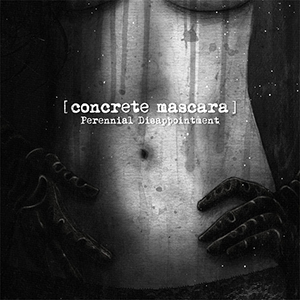 New Jersey based harsh electronics trio Concrete Mascara have a handful of limited releases since their inception in 2011, but Perennial Disappointment is only their second full length album, following 2014's Blossoms of Shame. The title is obviously a tongue-in-cheek, self-effacing joke, however, because the eight songs that comprise it seethe with menace, creating a dark, violent environment via aggressive vocals, destroyed electronics, and perverse attempts at building rhythm.
New Jersey based harsh electronics trio Concrete Mascara have a handful of limited releases since their inception in 2011, but Perennial Disappointment is only their second full length album, following 2014's Blossoms of Shame. The title is obviously a tongue-in-cheek, self-effacing joke, however, because the eight songs that comprise it seethe with menace, creating a dark, violent environment via aggressive vocals, destroyed electronics, and perverse attempts at building rhythm.
The opening moments of "The Flesh of This World" are the most peace to be had on this album, and even that is a stretch.The trio cast a menacing rumble, slow but deliberate, with an open atmosphere, but one that channels impending doom.From that point until the closing moments, Perennial Disappointment does not relent.The following, "Area Trinity," is an immediate burst of crunching digital noises courtesy of Andrew Wilmer and Jack Scanlan and indecipherable (but obviously irate) screamed vocals from Frank Cordry (I assume, the credits are sparse at best).The feel is more of a harsh noise one, due to the sustained squall the band generates, but interrupted by some stuttering effects and overall variation in sound, with hints of structure being upset by harsh chaos."Snake Skin Stilettos" is a similar monolith of distortion, with a few passages of sickly, squelching synthesizers before dissolving into a painfully overdriven crunch.
At other times on this disc, Concrete Mascara opts for a more structured, at times almost rhythmic approach to the vile force that spews forth."Utopian Nightmare" is built around a pounding noise that does not stop, throbbing like a headache as Cordry's manic, indecipherable screams cut through.Perhaps most jarring, however, is the abrupt end the song comes to, which is somehow more forceful than any of the noisier moments.
On "Delusion of Sacrifice," the rhythm section is approximated by a machine gun like thud, as the whole piece is presented in a chaotic, but structured form that is heavily constructed from sheer anger and aggression.The vocal sections, again hysterical and heavily processed, do not appear until the second half, and the whole thing ends in a brilliant collapse.The trio dials back the tempo, but not the heaviness, for "Mouth of Flies, Tongue of Maggots."The slower pace is obvious from the lurching opening rhythms, and while the piece is more of a burn than a blaze, it is no less oppressive and limps away wonderfully.
The album culminates strongly in the final "Death Trigger Impulse."The sound is similar to what preceded it, but notched up a bit more into a sprawl of shrill, stabbing electronics and an overdriven buzz.Even though a pseudo-rhythmic layer of noise and heavily delayed vocal part appear, everything is engulfed in an intense, supernova like wall of noise that peaks and then stops abruptly.
Perennial Disappointment is not a record anyone could describe as nice or even potentially pleasant, but I doubt those are the adjectives Concrete Mascara were thinking when they devised this harsh suite of aggression.While terms like harsh and violent may be tossed about frequently when describing this type of music, they are entirely fitting for this album, and with a level of polish and realization that is extremely impressive.
samples:
Read More
- Administrator
- Albums and Singles
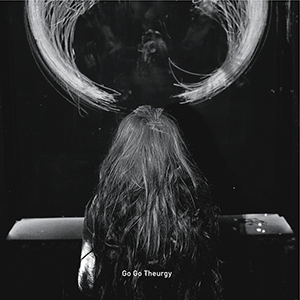 Go Go Theurgy is Polish composer Anna Zaradny's first album in eight years, following 2008's Mauve Cycles. Like that release, there is a significant amount of experimentation and abstraction to be heard on this record's two side long composition, yet for all its dissonance there is clearly order here. Order that takes the form of deconstructing and rebuilding more conventional pop and electronic music elements into completely unique contexts. It is challenging but captivating all the same.
Go Go Theurgy is Polish composer Anna Zaradny's first album in eight years, following 2008's Mauve Cycles. Like that release, there is a significant amount of experimentation and abstraction to be heard on this record's two side long composition, yet for all its dissonance there is clearly order here. Order that takes the form of deconstructing and rebuilding more conventional pop and electronic music elements into completely unique contexts. It is challenging but captivating all the same.
 
The opening moments of "Theurgy One" are rather sparse, considering what is to come.What is first a sequenced pattern of synthesized tones is soon engulfed by buzzing, machinery like drones that add a distinct darkness.One of the striking things that is immediately noticeable about Zaradny's work is its complexity, and her use of multiple, yet complementary layers of sound that give an impressive depth, while still retaining a coherent structure.
Electronic pulses soon pop up that mimic something that could appear on a standard techno record, but within this factory-like ambience, they have a character all their own.Mangled synthesizer leads appear to quickly transitions into sweeping, symphonic drama and back again.Amidst these bent tones and idiosyncratic sequences is an expanse of warm crackles and textures, making for an avant garde lead-in to a more conventional, pulsating techno conclusion.
The other half, "Theurgy Two," picks up where its predecessor left off.The opening moments have a more structured, sequenced sound to them, but the same bizarre, dissonant quality to the sound overall that is idiosyncratic to say the least.Her intentional use of rigid, dance-music like repetition with these sounds results in a sort of abrasive, slightly grating sound that eventually relents to showcase droning tones and clicking textures.
As the composition moves on, Zaradny introduces nasal, buzzing synthesizers that resemble a modern take on 1970s sci fi soundtrack schlock with droning, drill like vibrations and harsher passages of electronics.But even within these more dissonant sounding moments, she creates some distinctly glorious, beautiful moments of rich drama, sweeping electronic passages that are completely enrapturing.The work culminates into a rich, complex, and nuanced nod to composition that ends the record on a delicate, calm note.
Anna Zaradny's work on Go Go Theurgy shines most clearly in her clever use of elements associated with more conventional music, such as sequenced synthesizers and rhythmic passages, but employed in such a way that they bear little superficial resemblance to what would be expected.Instead they function on an almost subliminal level, drawing me into a sonic world that is utterly unique, bizarre, and fascinating for its entire duration.
samples:
 
Read More
- Administrator
- Albums and Singles
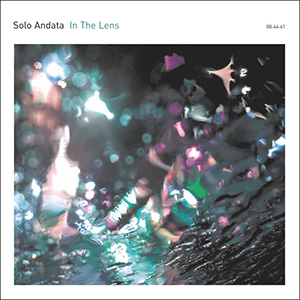 For their fourth record, the duo of Kane Ikin and Paul Fiocco took a different approach, and decided to revisit fragments of previous recordings that lay forgotten on various hard drives and cassette tapes for a multitude of years. Beginning with these elements, they then reworked the material and recorded new parts, making these recordings a sort of hybrid of unreleased works and new material. Because of that, In The Lens may at times feel more like a collection of songs rather than a full-fledged album, but that is no major detriment considering how well these compositions are executed.
For their fourth record, the duo of Kane Ikin and Paul Fiocco took a different approach, and decided to revisit fragments of previous recordings that lay forgotten on various hard drives and cassette tapes for a multitude of years. Beginning with these elements, they then reworked the material and recorded new parts, making these recordings a sort of hybrid of unreleased works and new material. Because of that, In The Lens may at times feel more like a collection of songs rather than a full-fledged album, but that is no major detriment considering how well these compositions are executed.
My first impression of this album was how it almost felt like a collection of miniatures, given most of the song’s relatively brief durations (only three clock in at over four minutes).Working in the context of these shorter songs, it allows the duo to experiment with a multitude of techniques that, while perhaps not likely to work as well in a lengthier composition, manage to be extremely effective in its more concise format.For example, most of "Left" seems to be constructed from plucked acoustic guitar strings and what sounds like a person writing with a pencil."Dancer" resembles a collection of bass string plucks and ambient space, with maybe a bit of horn tossed in for good measure.The structure is simple and fragmented, and over a longer duration it could end up a scatter-shot mess, but at a succinct minute and a half, it is excellent.
The duo also does an exceptional job at working with their diverse instrumentation to create extremely dynamic pieces that are simultaneously recognizable and yet entirely alien."Late Night Games With Her" seems to be constructed largely of chimes and guitar, but both are utilized in quite unconventional ways, and when blended with more ambiguous sounds, it never seems to stand still in its brief three minute duration. The slightly messy "Porcelain Blue" is a goulash of sounds, with clean, gentle tones and maybe a woodwind or two thrown in.Even with its intentional abstraction, there is a delicateness to it that cannot be denied.
A few pieces stand out strongly as being more structured and composed in nature.While there is still an overall loose structure to "From All The Broken Pieces", Ikin and Fiocco bring in more traditional bits of melody and rhythm to create something that feels more like a conventional song, yet still fits in nicely with the remainder of the album.Similarly, the concluding "Canvas" is comparably lush, layered with strummed guitar and keyboard.There is more instrumentation present, but as expected, it is not easily identifiable, yet entirely captivating.
The overall vibe given off by In The Lens is a sort of abstract take on late night mellow jazz music.While Fiocco and Ikin's use of what appears to be piano and upright bass throughout these 13 pieces make for an obvious linkage, there is a somber, but not sad mood throughout.For the whole length of the record, there is a calmness to it, but never one that becomes flat or dull.There is a definite sense of relaxation to be had, but not in a trite, clichéd sort of new age way.
samples:
 
Read More
- Administrator
- Albums and Singles
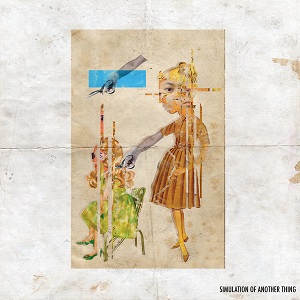 San Diego’s Steve Flato has remarkable and unpredictable range—from structured harsh noise (Mara’s Daughters) and hallucinogenic sine assaults (Salon de Flato) to mathematical ambience (This Is Our Last Cry Before Our Eternal Silence), and now, with Simulation of Another Thing, orchestrated soundtracks. Recorded with a trio featuring trombone, tuba, and French horn, Simulation blends melody, voice, field recordings, and improvised noise across three varied and affective songs (with an emphasis on the sinister). It comes in at a concise 30 minutes, but Flato packs a lot of great performances and unusual choices into that space, including one that combines the reassuring voice of a hairdresser with the steady pulse of a drum machine.
San Diego’s Steve Flato has remarkable and unpredictable range—from structured harsh noise (Mara’s Daughters) and hallucinogenic sine assaults (Salon de Flato) to mathematical ambience (This Is Our Last Cry Before Our Eternal Silence), and now, with Simulation of Another Thing, orchestrated soundtracks. Recorded with a trio featuring trombone, tuba, and French horn, Simulation blends melody, voice, field recordings, and improvised noise across three varied and affective songs (with an emphasis on the sinister). It comes in at a concise 30 minutes, but Flato packs a lot of great performances and unusual choices into that space, including one that combines the reassuring voice of a hairdresser with the steady pulse of a drum machine.
Album opener "Realistic Binaural Haircut" stands out as one of the more unusual and satisfying tracks Steve has ever recorded. Its primary elements are a burbling synth, a plodding tom-tom rhythm, several comedic horn sequences, and a hairdresser who whispers in a semi-seductive tone about highlights, layers, and split ends. She moves from left to right in the stereo, recommending hair colors and magazines while a steady pulse of electronic signals seeps into the mix. At the same time, a current of brassy tones burble into the foreground like an excited Shriner parade drawing interlocked figure-eights in the air. If the rest of the song, which jumps into double time halfway through, didn’t sound sound so intense, "Binaural" might come across like a joke. Instead, it revels in a Matmos-like confusion of driving noise and playful improvisations, both severe and mischievous.
"Dissonance Quartet" and "Simulation of a Thing at Owl Creek Bridge" tread on more somber ground. They’re moodier and twilit, especially "Dissonance," with its cavernous string melodies and spaced-out synths. There’s a touch of film noir about it, a romantic evocation of silhouetted detectives and half-seen movements that makes the piece feel tailor-made for the movies. "Simulation" travels further into expressionistic territory with steady drones and textured, almost empty field recordings. More like a Rorschach test than a cinematic score, the horns, faded environmental sounds, and electronic miscellany that populate its middle portion are porous and flexible, or hard and reflective, but definitely material, definitely bearing weight. The particular thing at Owl Creek Bridge that the piece is meant to simulate stays out of sight. Rather than clarify its qualities, Steve Flato chooses to obscure them, inviting his audience to wander into the mystery a little ways. Besides, there need not be a thing at Owl Bridge for the song to work (and Ambrose Bierce readers will probably read the reference differently anyway). By the time the album’s done, the listener has seen and felt its presence too, not as a definite thing, but as an enigma.
samples:
 
Read More
- Administrator
- Albums and Singles

Subtext presents Barotrauma by Eric Holm. The source material for Barotrauma was recorded in the Nordic fjords south of Oslo, an adjunct to Eric Holm’s training at the Norwegian School of Commercial diving (Norsk Yrkesdykkerskole). While he was training, world oil prices collapsed, so left with an uncertain future, Holm decided to record and film his dives, capturing the lonely calm of his isolation in the dark water.
Like environments on land, the seabed is populated with machines, industry, and noise. Interference is everywhere. Engines, equipment, drilling: it is a mirror of on-land environmental exploitation.
These six tracks were created over the last two years, using the sounds Holm collected from the sea floor and subsea equipment, which he then manipulated and processed, shaping a vision of his time in this underwater environment.
More information can be found here.
Read More
- Administrator
- Albums and Singles

The experimental Italian composer returns to PAN with a new LP, titled Clonic Earth. His ongoing output for the label has long-presented his electroacoustic sound compositions where since the mid-'00s, he has utilized analogue live sampling and real-time editing of field and studio recordings by means of manipulation of 1/4 inch tape.
His studio compositions, documented on few records, often explore themes of the internal - represented both by the psychological and the physical - and of the occult, which with the use of spoken text makes them often deeply existential works, self-investigations of the psychological, emotional and irrational horror within.
The new record, Clonic Earth is a perturbing, compelling and eventually mind-expanding work, marked by compositional strategies of exploded narratives, psychological insight and oracular literary references, where questions about the boundaries of spatial perception in the decoding processes of acousmatic music are overturned into existential, metaphysical questions.
Tricoli's allegorical and philosophical universe takes the form of an unhinged mind's landscape swarming with estranged sound objects, and sometimes reminiscent, in the complexity of details and surrealistic effects, of Hieronymus Bosch’s larger paintings. Compared to his previous works, the content of Clonic Earth explores more synthesized and heavily processed sounds, especially vocals, often appearing in the form of a religious, electrified chanting.
The record is described by its author as a natural consequence of the internal collapse depicted in his previous record, Miseri Lares: "As if all the debris left inside my loudspeakers have been ignited to expand into the ether, to find a justification at the principle of Chaos, or Cosmos alike."
This movement is expressed by references to the theme of fire as original matter in the Chaldean Oracles which, together with the later work of Philip K. Dick, are the main sources for the vocal/text elements of the composition. Fire, intended as the convulsive principle of existence, but also an ontologically terminal element - hence a representation of the infinite decay and a mean of communication with the otherworldly - serves the author a metaphor for the acousmatic listening experience itself: a borderline perception of sounds eternally fixed in their spasmodic disappearance, which could eventually drag us into a different layer of reality, drastically changing, subverting, or expanding the space in which they are diffused. A ritual, somehow, which may link the listener and the perceptive space that he inhabits with whatever lies beyond the loudspeakers, beyond the vibrating surface of the world.
More information can be found here.
Read More
- Administrator
- Albums and Singles

Centres is the stunning new album from Vancouver-based vocalist / composer Ian William Craig, and his first release for FatCat following two critically lauded back to back albums for Recital Program. Ian William Craig is a trained operatic vocalist who combines his voice with analogue synthesizers, reel-to-reel machines, and faulty tape decks to create sublime cascades of unpredictable decay and beauty. Though classically trained and grounded in the choral tradition, Craig’s early albums were centered significantly around the piano, with his voice merely a marginal presence. But in recent years his practice has come to focus increasingly around his powerful voice, as can be witnessed on Centres.
Fundamentally distressed yet texturally lush, Centres is an immensely deep, rich and rewarding listen. It was recorded in an assortment of studio and other locations across his Vancouver hometown: in concert halls and classrooms; train-yards and live rooms, as well as Craig’s own home. It was created using a mixture of sources - synthesizer, Hammond organ, guitar, accordion, wire recorder, loop station, Craig’s array of re-purposed tape decks and "cassette choir." The songs were created manipulating tape loops through two or three decks at once to create strange deteriorating delays with different colors. Craig would then circuit-bend the bias to create odd kinds of distortion, or bend the sound back into itself so it feeds back in unpredictable ways.
Centres is a stunning album that stands with a similarly unique sense of vision and integrity as the likes of William Basinski or Colin Stetson.
More information can be found here.
Read More
- Administrator
- Albums and Singles
 Here are two new archival releases from Bianchi, who has been more prolific in reissuing early (and usually more well regarded) releases compared to new material in the past few years. These discs (both CD versions of limited cassettes issued in the early 1980s) capture Bianchi in transition, moving from his less focused early work as the Sacher-Pelz moniker, into what most associate with the MB name and his string of amazing, but depressing LPs in the early 1980s. While the material might not be as strong as something on, say, Symphony for a Genocide or Regel, it is still much more than simple.
Here are two new archival releases from Bianchi, who has been more prolific in reissuing early (and usually more well regarded) releases compared to new material in the past few years. These discs (both CD versions of limited cassettes issued in the early 1980s) capture Bianchi in transition, moving from his less focused early work as the Sacher-Pelz moniker, into what most associate with the MB name and his string of amazing, but depressing LPs in the early 1980s. While the material might not be as strong as something on, say, Symphony for a Genocide or Regel, it is still much more than simple.
Both were released in 1980, but the two disc Mectpyo/Blut set (originally two cassettes) is early on into his transition using his own name.Because of that, the four pieces that comprise the set are more in line with those early Sacher-Pelz tapes:more experimental and diverse, but also less focused."Maidanek Bakterium", however, begins more like classic MB:distorted tape loops and broken rhythm machines drift along, locked in a definite loop but exhibiting subtle changes, like the sound of decay.At times, he transitions to less harsh tape manipulations of pre-recorded music, but goes out on a rawer note.
The following "Musique Belzec" starts with cheap echo-effect noise and shrill raygun like squeaks before settling into a groove based on a crudely manipulated tape of percussion.It is this jerky sort of beat, nowhere near steady, that ends up propelling the piece, and it leads to a junky, yet memorable structure that is reminiscent of the best Merzbow from the era.On the second disc, both "Mutant Brain" and "Mord Bahnhof" are comparatively simpler affairs.The first is heavily built upon Bianchi starting and stopping tape recordings, and with its filtering and odd musical source material, resulting in a sparse, less captivating piece of music.The final "Mord Banhoff" sees Bianchi working with rising and falling pitch bends, leading to an almost sea-sickness like sensation that transitions into abrasive detuned radio.It has a looser construction than much of his work, but it still coalesces very well.
samples:
 
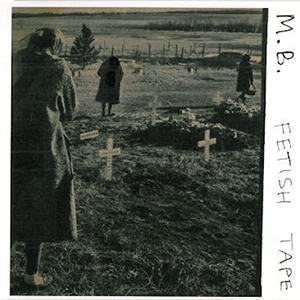 Fetish Tape may have been recorded earlier in 1980, but the two pieces that make up this early release are closer to the style he honed during his prestigious 1981-1983 run of LPs.The first of the two untitled pieces features open space and a semblance of rhythm, as a bass-synth like passage propels it into a more industrial framework.It is relatively simple in its composition, but the sense of order and structure is more composed and less chaotic than some of his early works, transitioning nicely between looser spaces and grinding noise.
Fetish Tape may have been recorded earlier in 1980, but the two pieces that make up this early release are closer to the style he honed during his prestigious 1981-1983 run of LPs.The first of the two untitled pieces features open space and a semblance of rhythm, as a bass-synth like passage propels it into a more industrial framework.It is relatively simple in its composition, but the sense of order and structure is more composed and less chaotic than some of his early works, transitioning nicely between looser spaces and grinding noise.
The second piece is slower, but somehow less depressive sounding than many of his latter works.There are sludgy, sustained passages of synth buzz and detuned radio that are similar to what he would work with brilliantly just a few years later.Here it is a bit less focused, and at times drifts into more textural-heavy, musique concrete realms than the standard proto noise/power electronics style his work is most associated with, but all the important parts are definitely here and working together to create some unique sounding work.
While I am happy with these transfers of previously impossible to find (other than nth generation bootlegs) or never available private tapes, they clearly show an artist in development.I, like many, are more than happy to delve deeply into these early Maurizio Bianchi releases and all of the lo-fi tape noise and broken effects unit splendor, but it is not everyone’s cup of tea.For more casual fans that have only a passing knowledge of his work, consider these to be akin to rough demos when set alongside his more noteworthy material.
samples:
 
Read More
- Administrator
- Albums and Singles
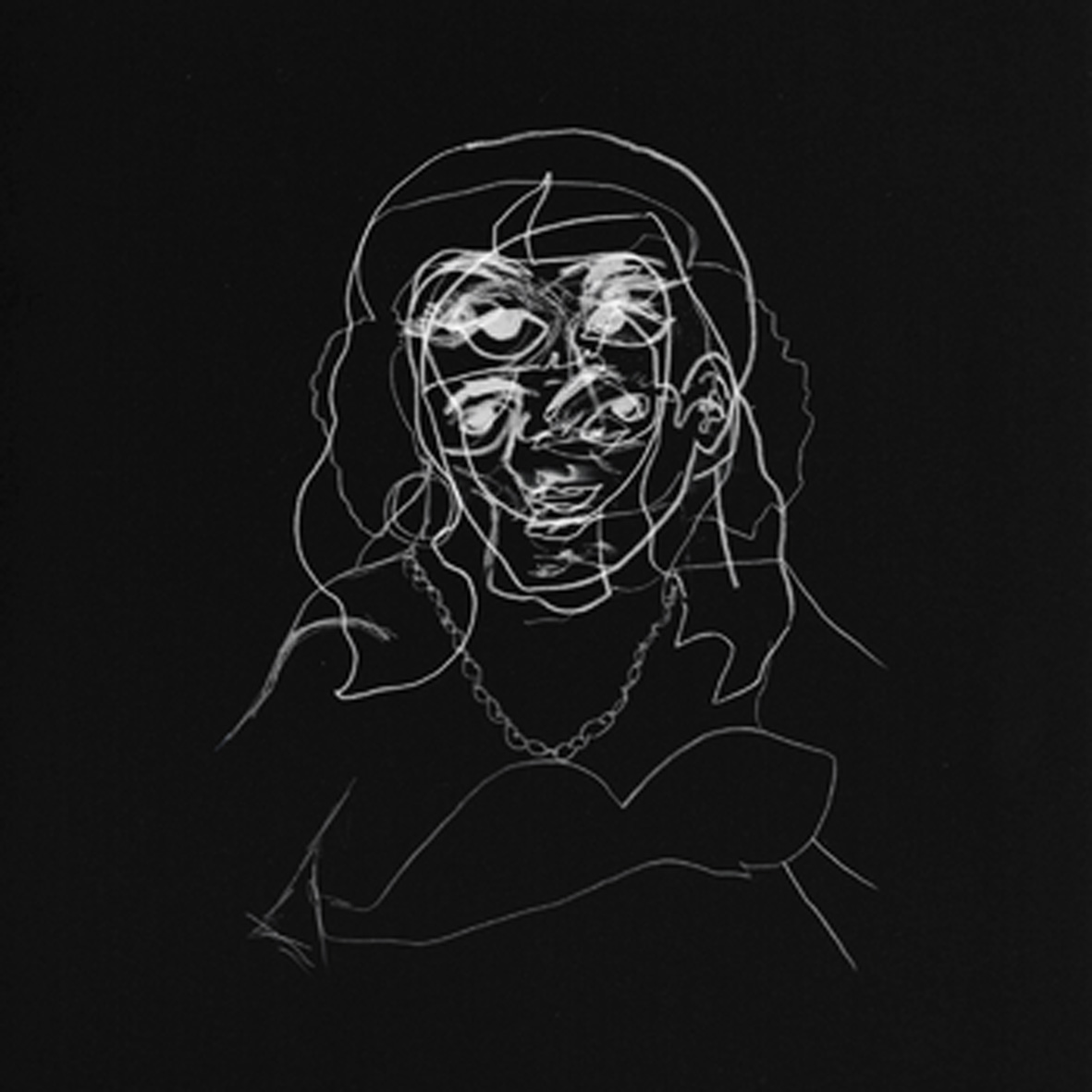 When I heard Klara Lewis’s self-released EP back in 2012, I was deeply impressed with how effectively she shaped her "found sound" collages into song-like structures, but worried that such an abstract and purist approach would be extremely limiting in the long run (it is hard to craft hooks without vocals or instruments, obviously).  As it turns out, my misgivings were largely unfounded, as Lewis has proven to be quite adept indeed at finding inventive and varied ways to exploit her unusual palette.  In fact, she seems to only be getting better and better at unlocking its deeper possibilities rather than backing herself into a corner.  That said, the content of Too probably will not surprise anyone who picked up 2014's Ett, though it may be a little less rhythmically focused.  That is not a detriment though.  In fact, it may even be liberating, as Too definitely feels more rich, otherworldly, and emotionally resonant than its predecessor.  More importantly, it features "Beaming," which is a work of absolute brilliance.
When I heard Klara Lewis’s self-released EP back in 2012, I was deeply impressed with how effectively she shaped her "found sound" collages into song-like structures, but worried that such an abstract and purist approach would be extremely limiting in the long run (it is hard to craft hooks without vocals or instruments, obviously).  As it turns out, my misgivings were largely unfounded, as Lewis has proven to be quite adept indeed at finding inventive and varied ways to exploit her unusual palette.  In fact, she seems to only be getting better and better at unlocking its deeper possibilities rather than backing herself into a corner.  That said, the content of Too probably will not surprise anyone who picked up 2014's Ett, though it may be a little less rhythmically focused.  That is not a detriment though.  In fact, it may even be liberating, as Too definitely feels more rich, otherworldly, and emotionally resonant than its predecessor.  More importantly, it features "Beaming," which is a work of absolute brilliance.
Over the course of her brief career, Klara Lewis has quietly revealed herself to be a remarkably assured artist working within some rather rarified terrain.  On one hand, her liberal use of non-musical source material makes her very much an experimental music artist, yet she seems genuinely intent on shaping her extremely non-commercial sounds into almost-songs with almost-hooks and almost-grooves.  It is a tough balance to maintain, but it is a welcome departure from the willful insularity and obtuseness that plagues so much experimental music.  I think the most succinct and glib way to describe her niche is "it sounds like someone trying to DJ a party armed only with albums from Touch artists."  Such sounds definitely do not lend themselves to floor-filling fun easily, yet Lewis often achieves a kind of understated, spectral genius and pulsing subterranean throb with her work, feeling like a bleary, kaleidoscopic, and dreamlike afterimage of nightlife rather than the flesh-and-blood actuality.
Lewis maintains remarkably high standards throughout Too's nine pieces, never stagnating, delving into filler, erring into derivative territory, or degenerating into more predictable or straightforward fare.  It is all good.  There are several songs that stand out for various reasons, however.  The first is the rather brief "Twist," which is shaped from reverberant metallic clangs, an erratic rhythm of dynamically active and phase-shifting clicks, shadowy drones, and an obsessively repeating swell that sounds like a single organ chord processed into unrecognizability.  The following "Too" is something of a left-field masterpiece, opening with an unexpectedly slow  and sensuous groove built from backwards drums, ghostly vocal snippets, and an actual bass line.  After dissolving briefly into abstraction, however, the groove reappears in much heavier and explosive fashion, as it sounds like Lewis is now backing a shit-hot free-jazz ensemble of trumpeting elephants.  Later, "Beaming" reaches even more dazzling heights, opening with surprising warm and hissing drones that sound like they are being dreamed by a futuristic machine.  Gradually, some distant field recordings start to seep in, as do some crackling and echoing intercom transmissions.  The overall effect is both absolutely gorgeous and absolutely hallucinatory.  In fact, it may very well be the most perfect piece of music that I will hear this year.  Describing it as lushly melancholic and otherworldly is a good start, but it actually evokes something far more unique than that: it is almost like simultaneously hearing our world and a beautiful alien transmission at the same time in heavenly juxtaposition.
As far as flaws are concerned...well, there just are not any to be found.  At worst, Lewis is content to merely weave a quietly throbbing industrial reverie between her more ambitious pieces, but even those are wonderfully distinctive and satisfying.  I want to say that the genius of Too lies primarily in the lightness of Lewis's touch, but this album is actually a goddamn pile-up of unwaveringly great decisions: the textures, the mood, the song durations, the production…just everything.  The lightness of touch is quite crucial, however, as Too is a gorgeously vaporous and beautiful album shot through with just enough disquieting darkness to make it all feel like a precarious dream.  Such a highwire act could have been easily derailed by something as simple as a clear melody or a too-forceful rhythm, but none of that happens and spell remains both intact and beguiling until the last notes fade.  Klara Lewis is a sonic sorceress and this album is amazing.
 
Read More

